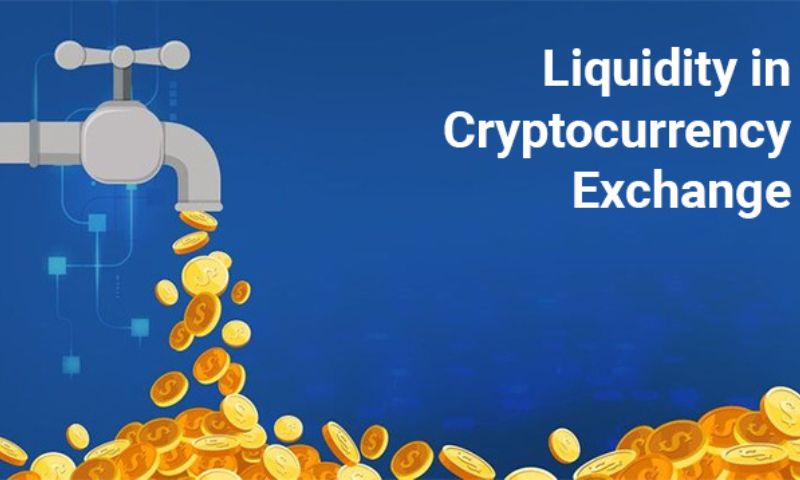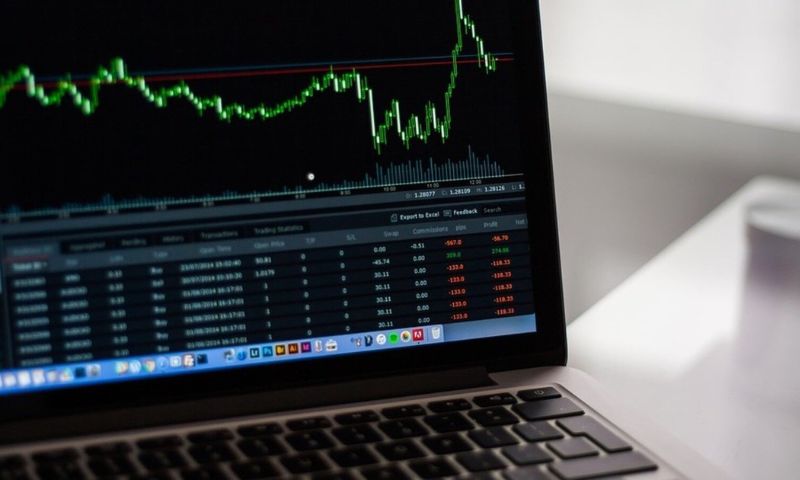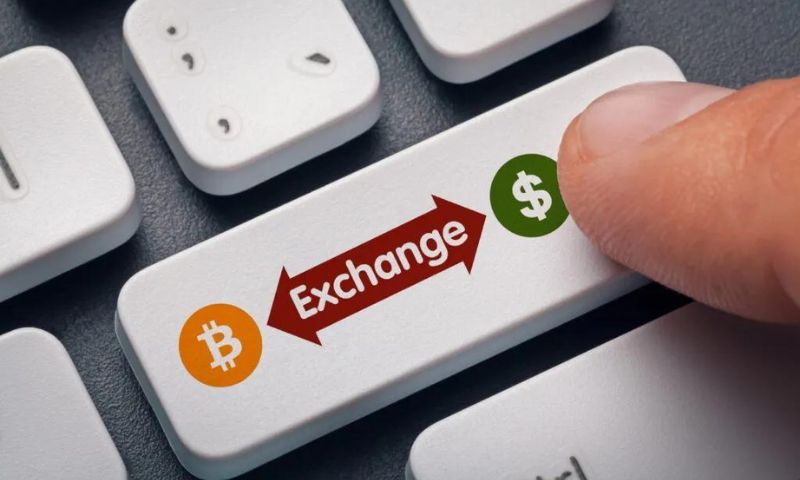How to Improve Crypto Exchange Liquidity: A Trader’s Secret Weapon
Liquidity can make or break a crypto exchange. As a seasoned trader, I know the drill: without enough of it, trades get slow, costs shoot up, and users may start to walk away. It’s the lifeblood that keeps an exchange going strong. But there’s good news: mastering how to improve crypto exchange liquidity could turn the tides in your favor. This guide slices through the complexity with clear tactics—from market makers to incentive crafting and strategic tech use. You’ll find simple yet powerful ways to pump liquidity into your exchange, making your trading platform one to reckon with. Ready to deep dive and push your platform to the top of the game? Let’s get to work.
Understanding the Role of Market Makers in Exchange Liquidity
Deploying Crypto Market Making Strategies
Market makers are the ones who make trades flow smooth. They are around to buy when you want to sell. And they are ready to sell when you want to buy. They place lots of orders on both sides of the book. This means traders can always find a match. It’s key for boosting exchange liquidity.
More orders in the book make for more chances to trade. This makes the exchange a busy and happy place to be. Market makers use special plans, or strategies, to grow trade volume. This helps everyone who trades. Think of them like helpful bees buzzing around, making the market garden bloom.
The Impact of Automated Market Makers
Now we have something cool called automated market makers, or AMMs. AMMs run on code and don’t need a break. They use algorithms to set prices, and that’s based on supply and demand. So instead of waiting for a buyer or a seller, you trade with a pool of coins. These pools are stocked by people who put their coins in to get fees.
This is a hit in the world of DeFi, short for decentralized finance. It changes how we trade in a big way. AMMs let you swap crypto anytime, without waiting for someone else to say yes. It’s like a non-stop party for trading. It helps liquidity, which means there’s more action and better prices.
AMMs are changing how we think about the role of market makers. They are open to anyone who wants to be part of the gig. And it’s good for the entire market. Because let’s face it, nobody likes a quiet market. The noise of trading is the music of money.
Imagine the vast world of crypto as an ocean. Cryptocurrencies are the ships that sail this ocean. Market makers, both human and automated, are like the lighthouses. They guide these ships, ensuring there’s always a clear path for them to flow. When they do their job well, the whole ocean thrives. The waves keep rolling, and every boat finds its way. Traders can set sail without fear, knowing there’s always a hand to catch them.
With smart market making, an exchange isn’t just a place to swap digital coins. It’s a bustling city with open shops, where deals happen fast and fair. It’s also a sign that tells big investors it’s safe to dive in. That’s how you get what we call attracting institutional liquidity. This means more money and smarter trades in the game.
When it comes to merging the old and the new—like tying up crypto with traditional finance—market makers lace up those connections. They ensure things run without hiccups, carving out a safe space where both small fish and big whales can swim together.
The dance of numbers, the swirl of coins, the matching of wants—this is what liquidity is all about. It’s what makes or breaks a crypto exchange. And knowing this secret handshake of the trade, you become part of a world that’s always turning, a market that’s ever alive.
Crafting Incentives and Rewards to Boost Trading Volume
Structuring Liquidity Incentives for Traders
You know that feeling when a market is so thin, one trade could spike the price? That’s poor liquidity—and it’s bad for traders and exchanges. So, how do we fatten up that order book?
First, let’s chat about liquidity incentives. Think of these as little rewards for trading. These perks encourage traders to stay active. They help create a busy and healthy market.
Picture this: You’re trading on an exchange. The more you trade, the more rewards you rack up. These could be lower fees, special tokens, or even cold, hard cash. All this just for doing what you love – trading.
It’s like a game where everyone wins. You get more bang for your buck. The exchange gets a busier order book. And with a busier market, prices stay stable.
The Design and Benefits of Liquidity Mining Programs
Now, let’s dive into liquidity mining. This is like hitting a jackpot for being loyal. You lock up some crypto and get rewards in new tokens. But what’s the magic behind this trick?
It’s all based on smart contracts. These are like vending machines. You put in your coins; you get out a soda—or in our case, rewards. Liquidity mining programs use this idea. They reward you for providing funds to liquidity pools.
Here’s the sweet part: the rewards often come from the new tokens of the project. It’s like getting a slice of the pie from the start. It’s a winning deal for traders looking to grow their holdings.
It also helps exchanges. More funds in the pools mean a thicker order book. And we all love a sturdy book that can handle big trades without flinching.
So, there we have it. From little perks to grand rewards, it’s all about keeping traders trading. With a bustling market, the exchange becomes a magnet—pulling in new users from all corners of the crypto-sphere.
Together, incentives and liquidity mining build a thriving market. One where traders stick around, and new ones come knocking. It’s the hustle and bustle that makes an exchange come alive.
Strategic Partnerships and Advanced Liquidity Solutions
Partnering with Market Makers to Deepen Order Books
When we trade crypto, we want our buys and sells to go smooth. For that, we need a packed order book. Think of the order book as a party. The more folks you have, the better the vibe. And nobody knows this better than market makers. They are like your cool friends who always know how to keep the party going.
Market makers play a big part in boosting exchange liquidity. They make sure there are enough buy and sell orders. This means we can trade without waiting too long or shifting the price much.
Want to know how they do it? It’s simple: they buy your crypto when you want to sell and sell it when you want to buy. This fills the order book and helps keep prices stable. Partnering with them is a win-win. They get to do business on your platform and you get that sweet, deep order book that traders love.
But not all market makers are built the same. Some are like ninjas, using automated systems to place orders super-fast. Others might be more like chess players, thinking many moves ahead. Whatever their style, when they team up with your exchange, they bring their A-game. This brings more traders to your platform. And more traders mean more money moving around.
It’s like when two stores join forces for a big sale. They cut better deals than just one store alone. It’s a surefire way to pull a crowd. Partnering with market makers does that for your exchange.
Integrating API Liquidity Aggregation for Improved Trade Execution
Now, let’s kick things up a notch with API liquidity aggregation. It sounds fancy, but it’s just tech talk for a secret path to even better trading. Imagine you’re ordering pizza, but you can only get it from next door. That’s no good, right? What if you could order from any place in town? Now that’s more like it!
API liquidity aggregation is the pizza delivery hero of trading. It finds the best trades from many exchanges, not just yours. This means you get the best prices and fastest trades.
It’s like having a fast pass at a theme park. You don’t have to wait in line. You go right to the front and get on the ride before everyone else. That’s what improved trade execution is all about. You trade faster and smarter than others.
So when we add API liquidity aggregation to our exchange, it’s big news. It’s like your favorite game just got the coolest update. Traders can move in and out of trades with the speed of a race car. ZOOM!
Remember, a crypto exchange is only as good as its liquidity. When there’s enough of it, everyone wants to play in your sandbox. From traders looking for a good deal to big-time players wanting to make a splash. It’s all about keeping the party pumping.
In short, partner smart and trade smarter. That’s the secret sauce for a crypto exchange that rocks.
Measuring and Managing Liquidity Effectively
Utilizing Exchange Liquidity Metrics for Optimization
As a crypto exchange pro, I’ve seen how vital liquidity is. It’s like the lifeblood of our trade world. More of it means happier traders and a bustling exchange. To get started, we look at some key numbers—these are our exchange liquidity metrics. They tell us the health of our exchange. We check the trade volume and the spread. That’s just the gap between what buyers want to pay and sellers want to get.
Here’s the game plan: Keep that spread thin. A slim spread pulls in traders, eager for fair deals. Achieving this isn’t just luck; it involves clever steps that lure traders and their cash. We boost trade by giving traders reasons to stay. Things like lower fees or a little bonus crypto for saying, “Hey, I’ll trade here!”
We can’t forget about making the exchange user-friendly. Easy does it, always. Our traders need clear charts and simple trades. No one should need a map to find their way around our platform.
Liquidity Fund Management and the Role of Liquidity Providers
Now, let’s talk about the treasure keepers—the liquidity funds. These funds are massive pools of money, ready for traders to dive in. They serve up the cash needed so trades can happen fast. When traders see they can buy or sell quick, they’re all in.
Here’s the twist: We don’t fill these pools up alone. We team up with big players, the liquidity providers. They’re the whales, diving into our exchange with their hefty pockets. We join hands because their deep pockets smooth out the trading waves. They make sure there’s always cash to splash for your next move.
Think of them as the guardians of the trade sea. Because of them, you can take that leap and know there’s water in the pool. Plus, they don’t do this just to be nice. They earn a tiny cut from each trade, which adds up to a mountain of coins.
Liquidity providers aren’t just good for keeping the trading smooth; they’re also key to making the exchange stand out. With their help, we shoot beyond just ‘good enough.’ We aim for exceptional, for a market that flows better than a fresh stream.
In the land of crypto exchanges, managing these funds is like steering a ship. Do it right, and you sail towards Trade Island. There, the beaches are golden with coins, and the palm trees rustle with the sound of successful trades.
By leaning on solid metrics and the might of our liquidity allies, we pave a golden path for traders far and wide. It’s about knowing the terrain and having the right crew by your side. With these strategies up our sleeve, we’re not just playing the game. We’re changing it.
In this post, we dug into the key parts that keep markets running smooth. We learned how market makers fill gaps and help trades flow easy. Then, we saw how rewards pull in traders to make markets even better. We explored how teaming up with pros and using smart tools can make order books thick and trades quick. At the end, we looked at how to track and handle cash flow to stay on top.
These insights show that a strong market needs good partners, smart systems, and solid plans. With this knowledge, you can help your exchange stand out and win traders’ trust. Always keep an eye out for new ways to stay fluid and in charge of your funds. Here’s to making markets that work well for everyone!
Q&A :
How can one enhance liquidity on their cryptocurrency exchange platform?
To boost liquidity on a cryptocurrency exchange, several strategies can be employed. These include integrating with other high liquidity exchanges, offering market-making incentives to attract traders, implementing a robust API for algorithmic trading, and promoting your platform vigorously to grow the user base. Additionally, incorporating features that instill user trust, such as strong security measures and transparent policies, can also contribute to improved liquidity.
What are some effective liquidity solutions for crypto exchanges?
Crypto exchanges can adopt a variety of liquidity solutions to ensure seamless trading experiences. These solutions include joining a liquidity network, engaging in cross-platform partnerships to share liquidity pools, employing liquidity bots, and participating in decentralized finance (DeFi) protocols to tap into larger liquidity sources. It’s also valuable to support a wide array of popular and stable cryptocurrency pairs that traders are actively looking for.
Why is liquidity important for cryptocurrency exchanges?
Liquidity is a critical factor for cryptocurrency exchanges as it determines the ease with which users can buy and sell assets without significantly impacting the market price. High liquidity leads to tighter spreads (difference between buy and sell prices), more efficient markets, and increased investor confidence. This can result in higher trading volumes, better price stability, and an overall improved reputation for the exchange.
Can adding more crypto pairs improve exchange liquidity?
Adding more crypto pairs may enhance liquidity, but it’s important to strategize which pairs to include. Pairs with high demand and trading volume can attract more users and boost liquidity, whereas obscure or low-demand pairs might spread liquidity thin and have minimal impact. Thus, exchanges should analyze market demand and strategically select crypto pairs that align with their users’ interests.
What role do market makers play in crypto exchange liquidity?
Market makers play a pivotal role in ensuring liquidity on crypto exchanges. By continuously buying and selling cryptocurrencies, they provide the necessary market depth and maintain the fluidity of trading. They help to narrow the bid-ask spread, allowing for more efficient price discovery and enabling traders to execute orders without large price slippage. Exchanges often incentivize market makers through reduced fees or rebates to encourage this activity.






